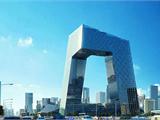Then flows into the water wall RI through the lower header.
Weima wall-hung boiler repair Q&A; How does the water circulation work in the boiler's water-cooled wall tubes?
Answer: The water-cooled walls of the boiler are exposed inside the furnace, absorbing the radiant heat from the high-temperature flames within the furnace. Some of the water inside the tubes turns into steam. The downcomers are arranged outside the furnace walls or between the furnace walls and are basically not heated. This creates a pressure difference, causing the water to flow from the upper drum through the downcomers into the lower header, then from the lower header into the water-cooled walls. Finally, the steam-water mixture in the water-cooled wall tubes flows upward into the upper drum. After passing through the steam-water separation device in the drum, the water remains in the drum to continue participating in the cycle.
When the boiler load increases, combustion intensifies, and the furnace temperature rises, the amount of heat absorbed by the water-cooled wall tubes also increases, resulting in more steam being produced. The flow speed of the steam-water mixture also increases, accelerating the water circulation. Of the water flowing into the water-cooled walls, part of it turns into steam, while the rest continues to participate in the cycle. The circulation ratio cannot be too small; otherwise, there will be too little water remaining after vaporization in the water-cooled wall tubes, which would not adequately cool the tube walls. Generally, the circulation ratio for industrial boilers is about 20, meaning that the steam generated accounts for approximately 5%.
Article source: http://blog.tianya.cn/blogger/blog_main.asp?BlogID=3778832.



